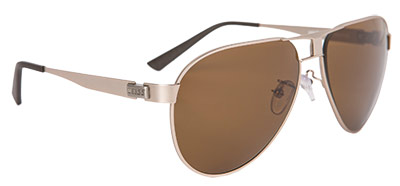
By Preston Fassel
It’s wintertime. Perhaps there’s a crisp chill in the air and snow on the ground. If you live in Texas like me, it’s pretty much business as usual. So I’ll indulge in something that lets me pretend it’s cold and gray outside: photochromics. I’m looking at a product from Zeiss. Except for one entry in my “Insert Blue Pun Here” series, I’ve never worked much with Zeiss product, so it was with some seasonally appropriate excitement that I tore open the package containing PhotoFusion lenses. Thank you to Zeiss for providing PhotoFusion lenses in my prescription for this review article.
PhotoFusion is positioned as a self-tinting lens with speed. According to a white paper from Zeiss, PhotoFusion are some of the “fastest” lenses on the planet, darkening 20 percent more quickly than other photochromics and returning to completely clear lenses twice as fast. I’ll admit that I went into my trial with skepticism: The speed with which lenses darken—and especially how soon they become clear again indoors—is often a deal breaker with patients. Many times I took a patient outdoors to demonstrate my photochromic lenses, exciting them with the product’s performance, then came back inside, only for the patient to change their mind once they saw my lenses didn’t become clear again as quickly as they’d anticipated. With PhotoFusion, I can’t foresee that being a problem—as quickly as the lenses darken outdoors, they begin to deactivate almost immediately upon returning indoors.
I’m an aficionado of brown photochromics, and decided to stick with what I knew for purposes of a PhotoFusion test run. PhotoFusion’s brown is unique in that it has a soft mauve hue to it. It’s still brown, but the reddish-pink undertone relaxes the eye a bit. That may be an issue for a patient in search of a “true” brown lens, or who’s picky when it comes to aesthetics, but I enjoyed the look of the lens and the effect. I can see this playing well with patients who are concerned about the cosmetics of their glasses. I had patients who were hard-and-fast black frame devotees, but didn’t care for gray lenses. Nonetheless, they couldn’t bring themselves to put brown lenses in a non-brown frame. With PhotoFusion, that hint of reddishness takes some of the “guilt” away: Red and black is a classic combo.
The biggest “plus” about PhotoFusion was how clear they get indoors. Combined with Zeiss’ DuraVision Platinum AR, these are some of the clearest photochromic lenses I’ve seen. While other photochromics combined with AR can make it appear as though the wearer has a slight tint to their glasses indoors, that isn’t an issue with PhotoFusion—it doesn’t look like there are lenses. This makes them an ideal choice for patients who are especially conscious of their appearance or who may be photographed regularly for their job. I’ve recommended them to a friend who regularly appears at press junkets, and I’m going to use my pair as “event glasses”—something to pull out on an occasion when I’d prefer people see my eyes. They’ve piqued my interest in exploring more Zeiss products, and you can expect to see more reviewed here in future Pro to Pro installments.













